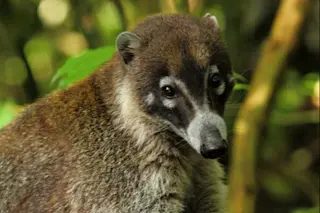A leading theory for why primates have bigger brains than other mammals has been debunked.
The “fruit-diet theory” contended that foraging ability and intelligence go hand in hand in a sort of fruit-foraging feedback loop. Essentially, it posited that animals with larger brains can find fruit easily, then eating that fruit fuels brain growth, which, in turn boosts foraging ability.
But, a study in Proceedings of the Royal Society B that compared larger-brained primates fruit foraging with smaller-brained mammals showed no difference in success. “We're not finding support for this idea that finding fruit is driving the increase in brain size, and that applies to primates,” says Ben Hirsch of the Smithsonian Tropical Research Institute, an author of the paper. “I think it applies very much to humans, and it might apply to other species as well.”
Creating the conditions for the study required a bit of cleverness. Fruit-finding tests ...














